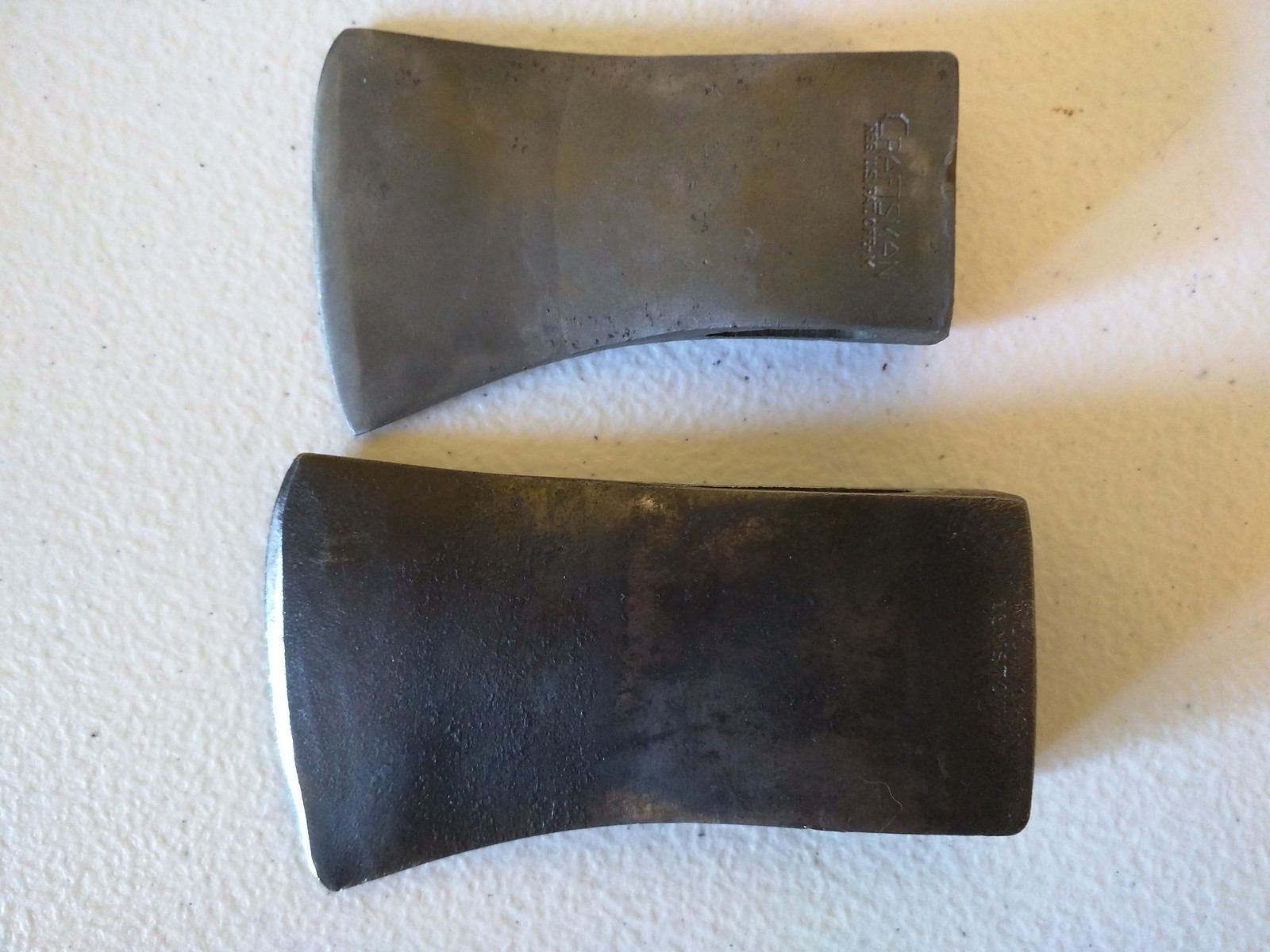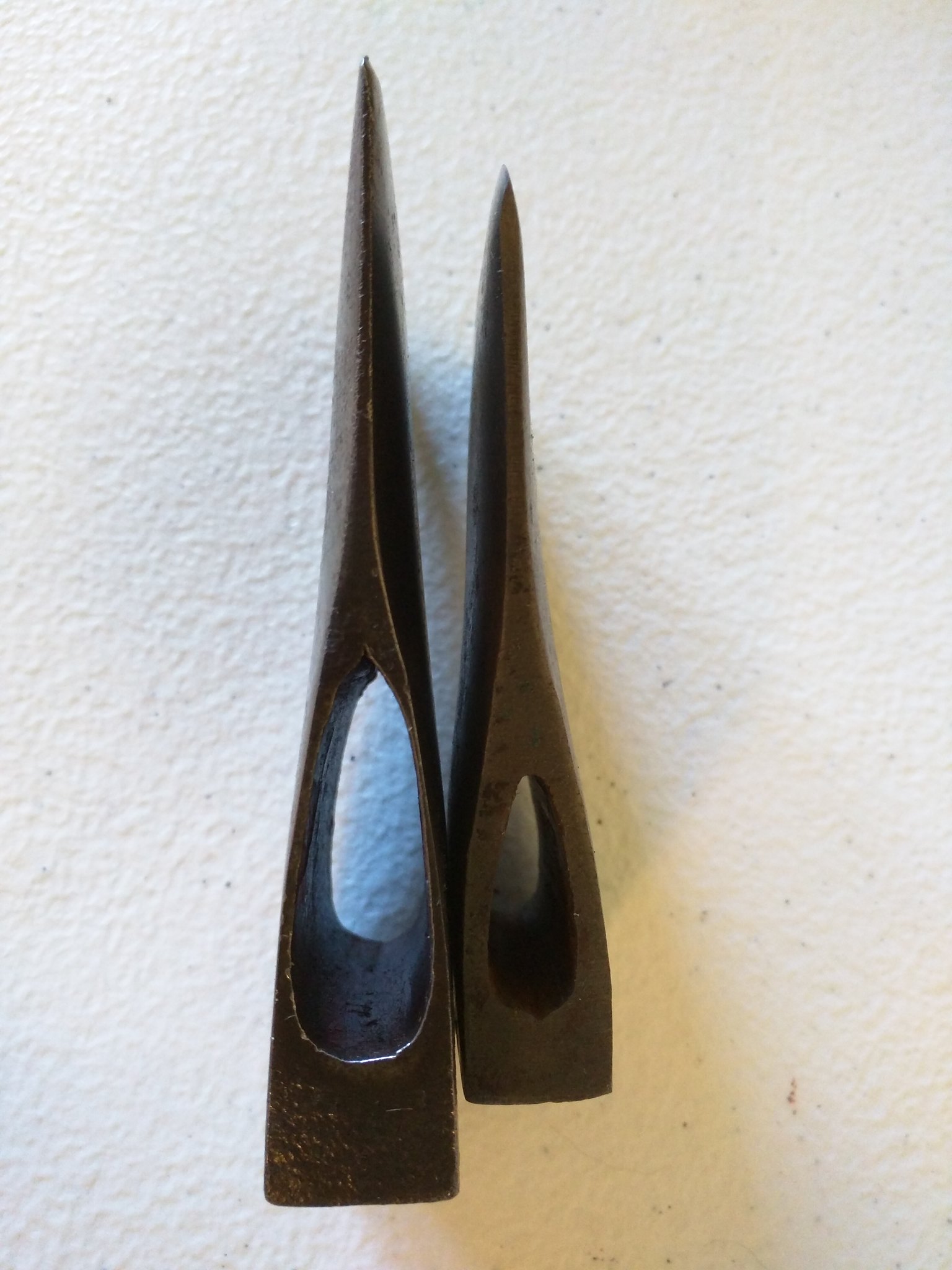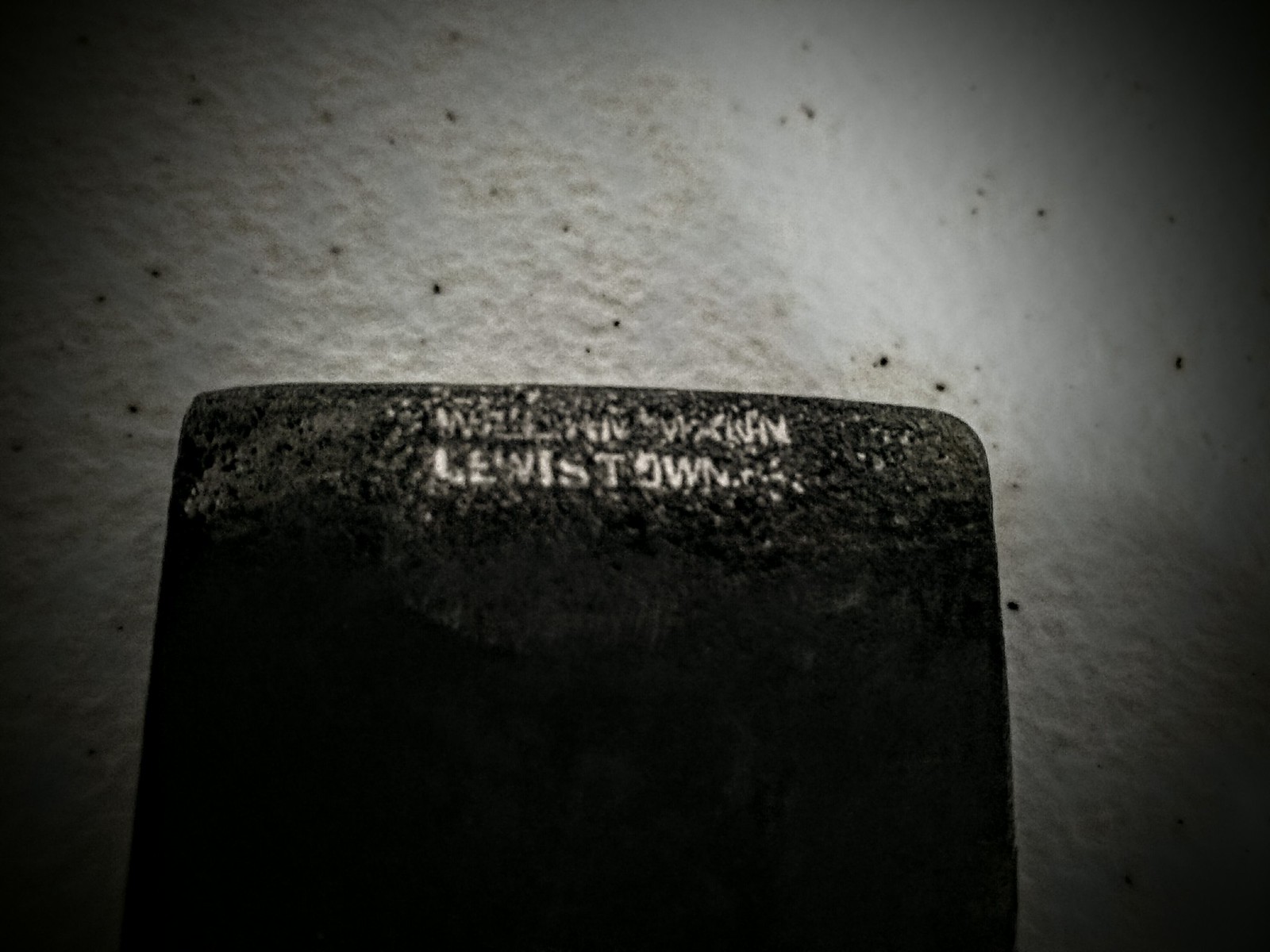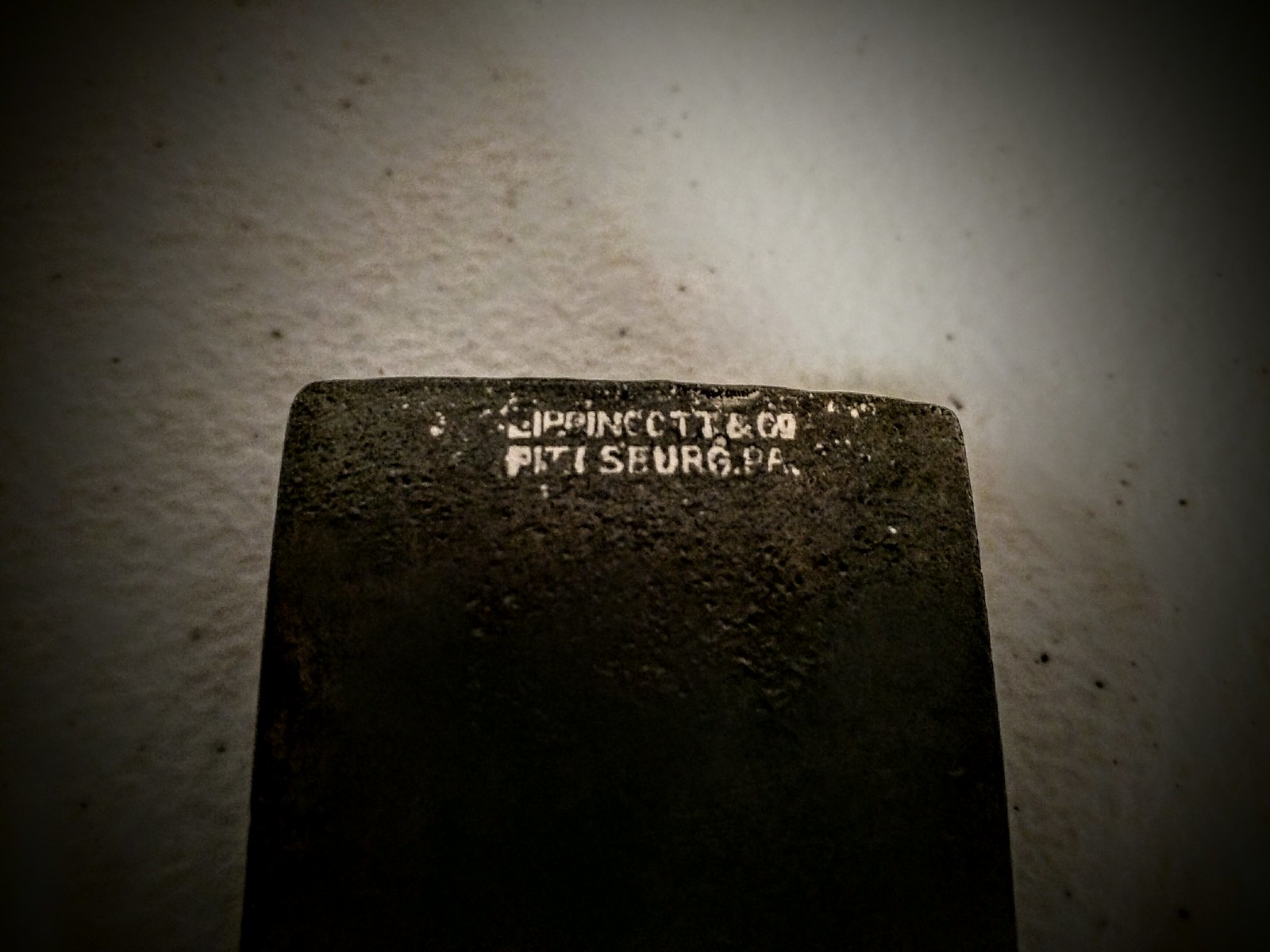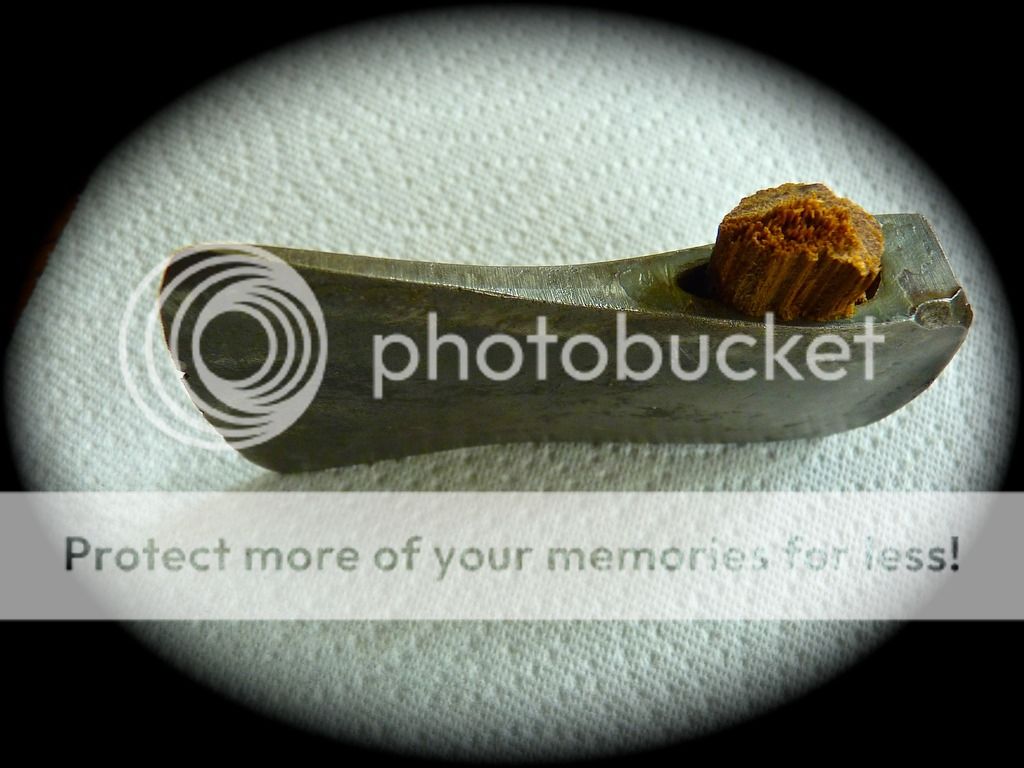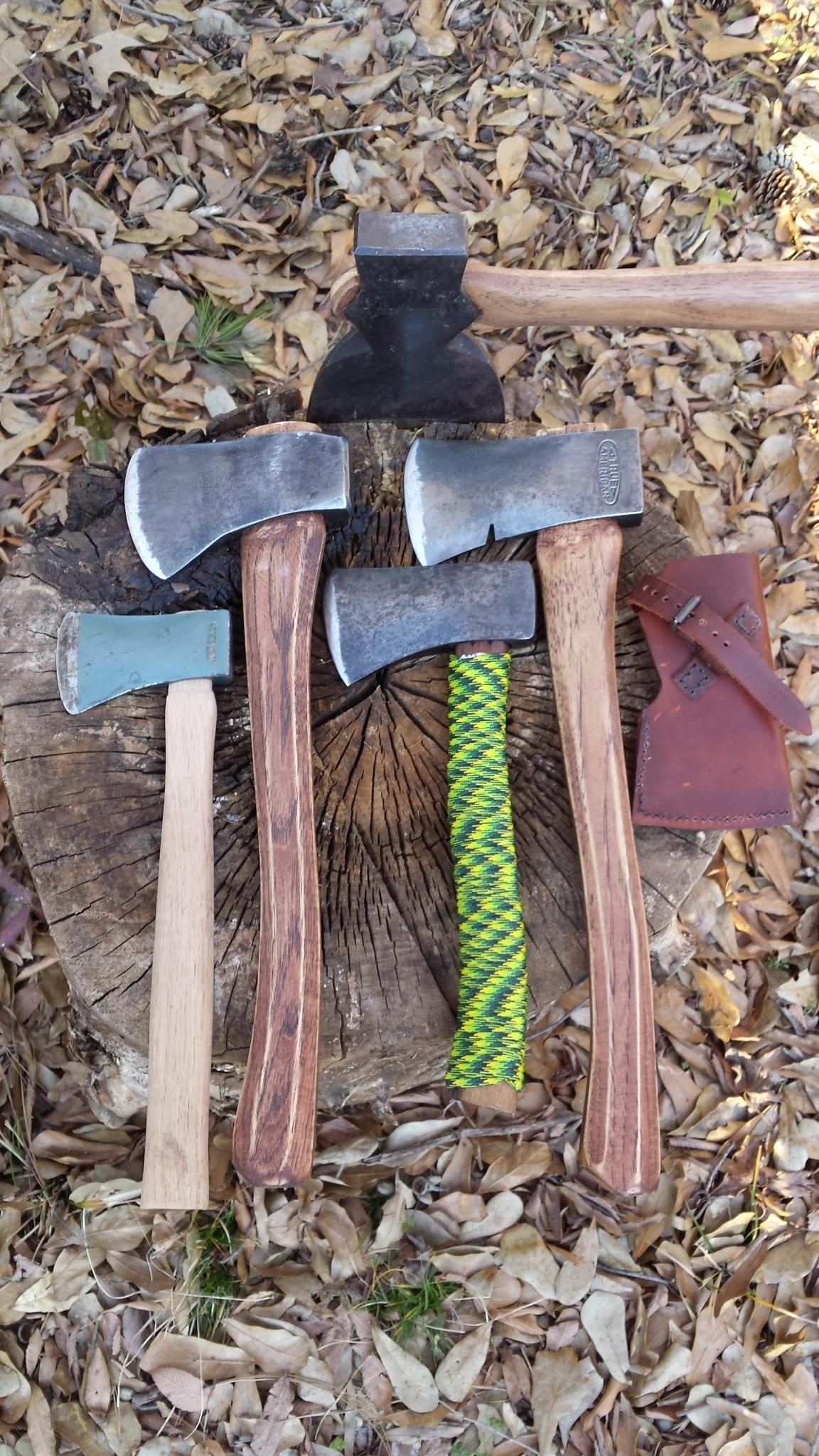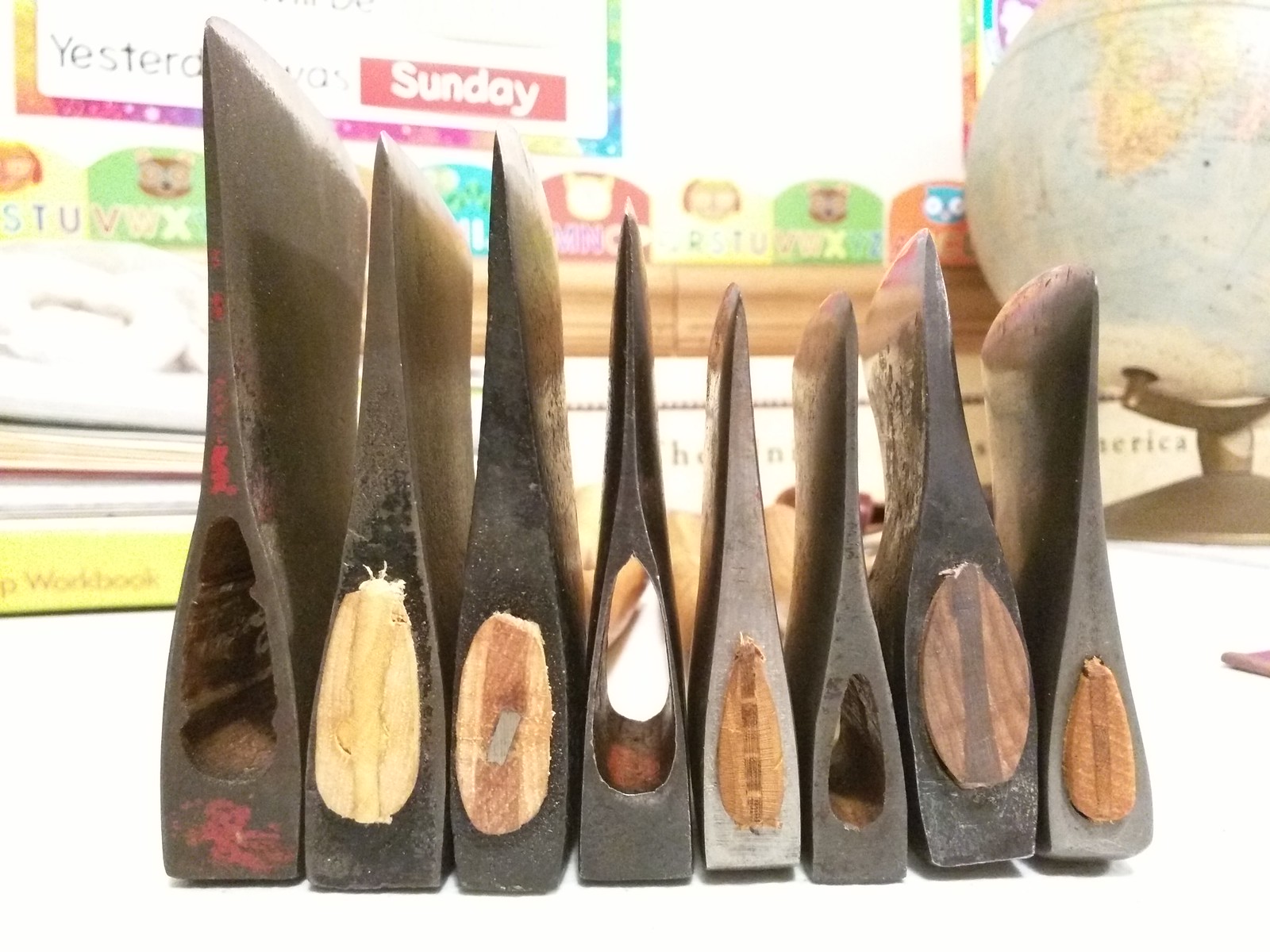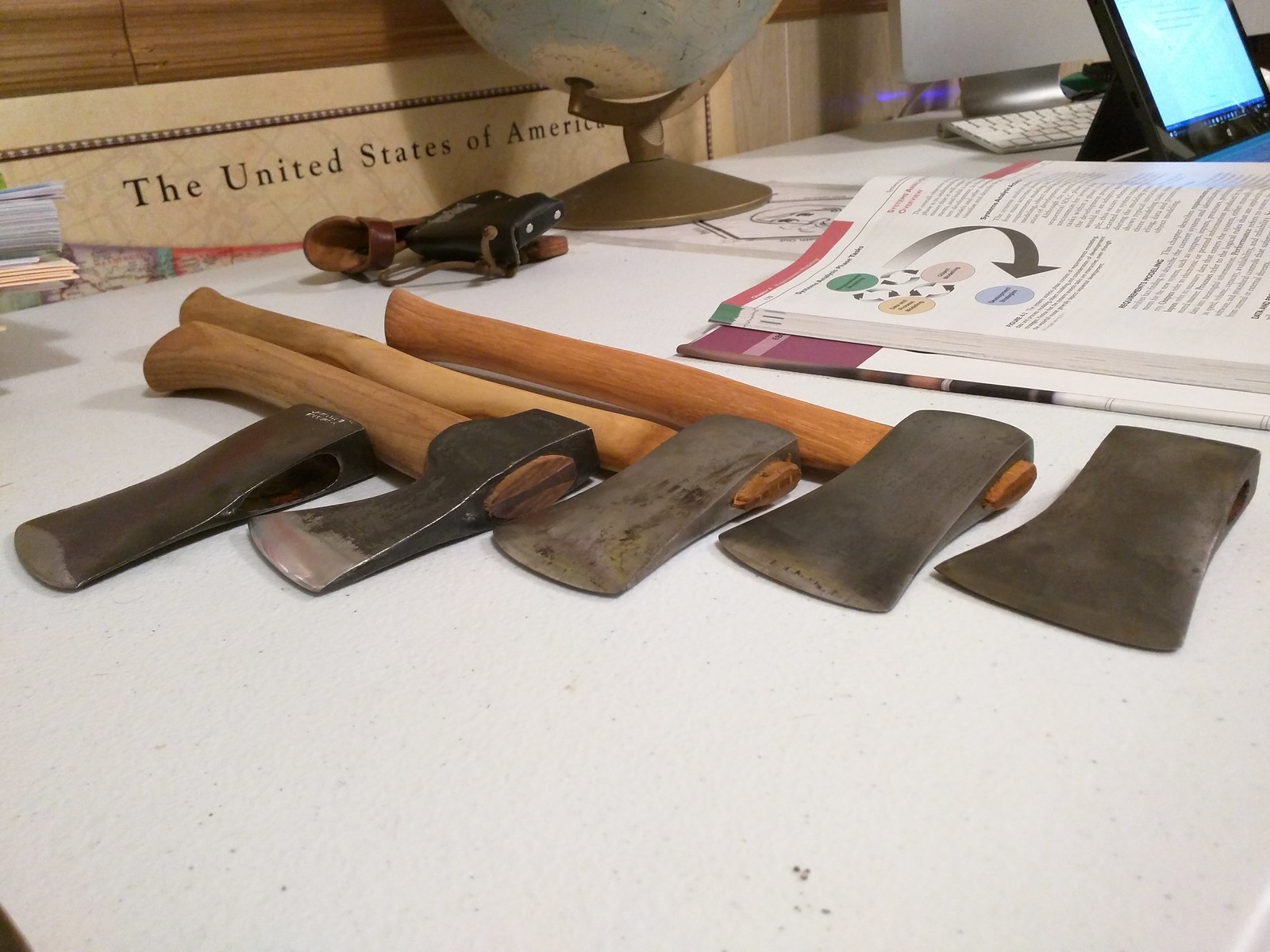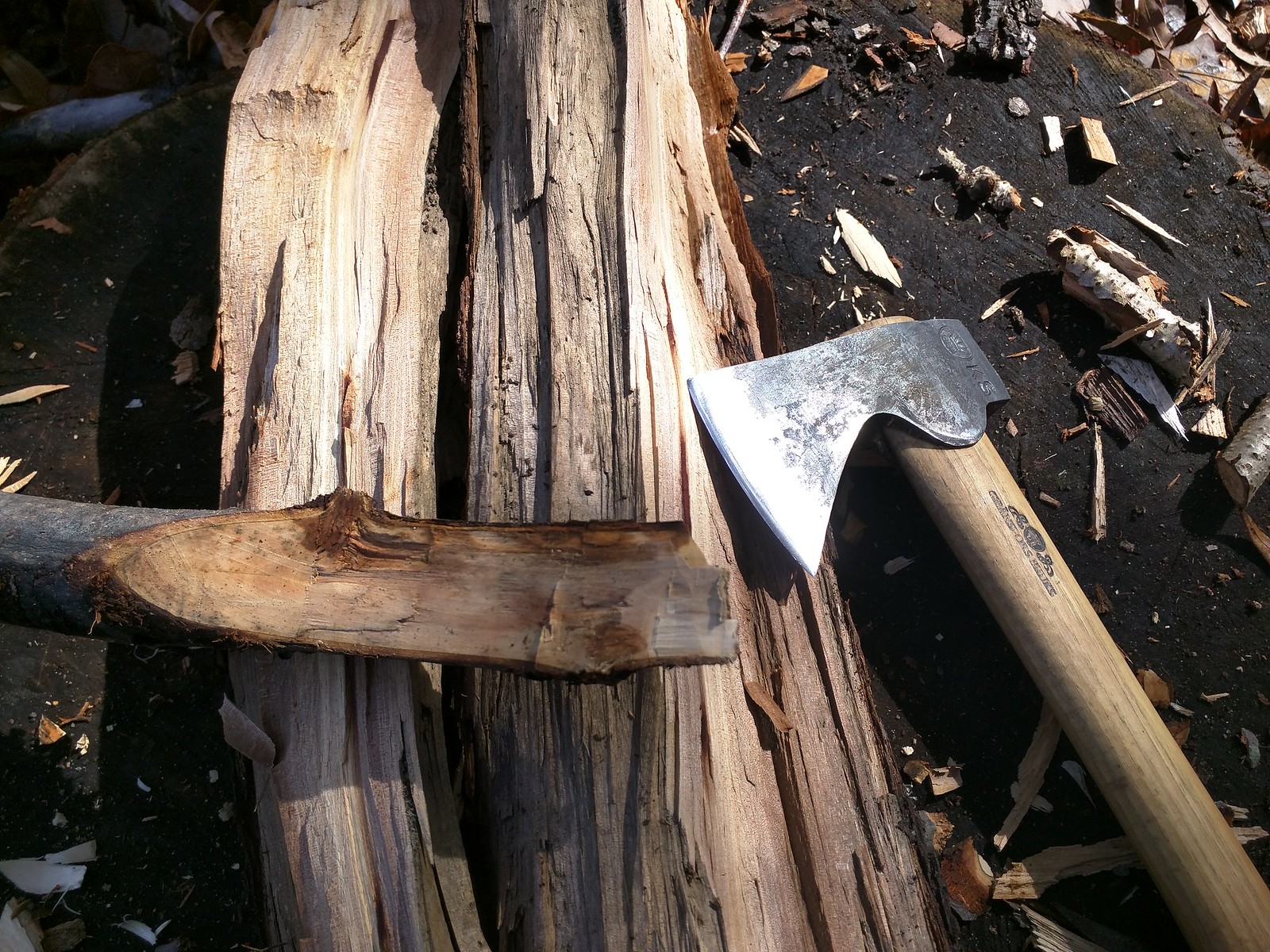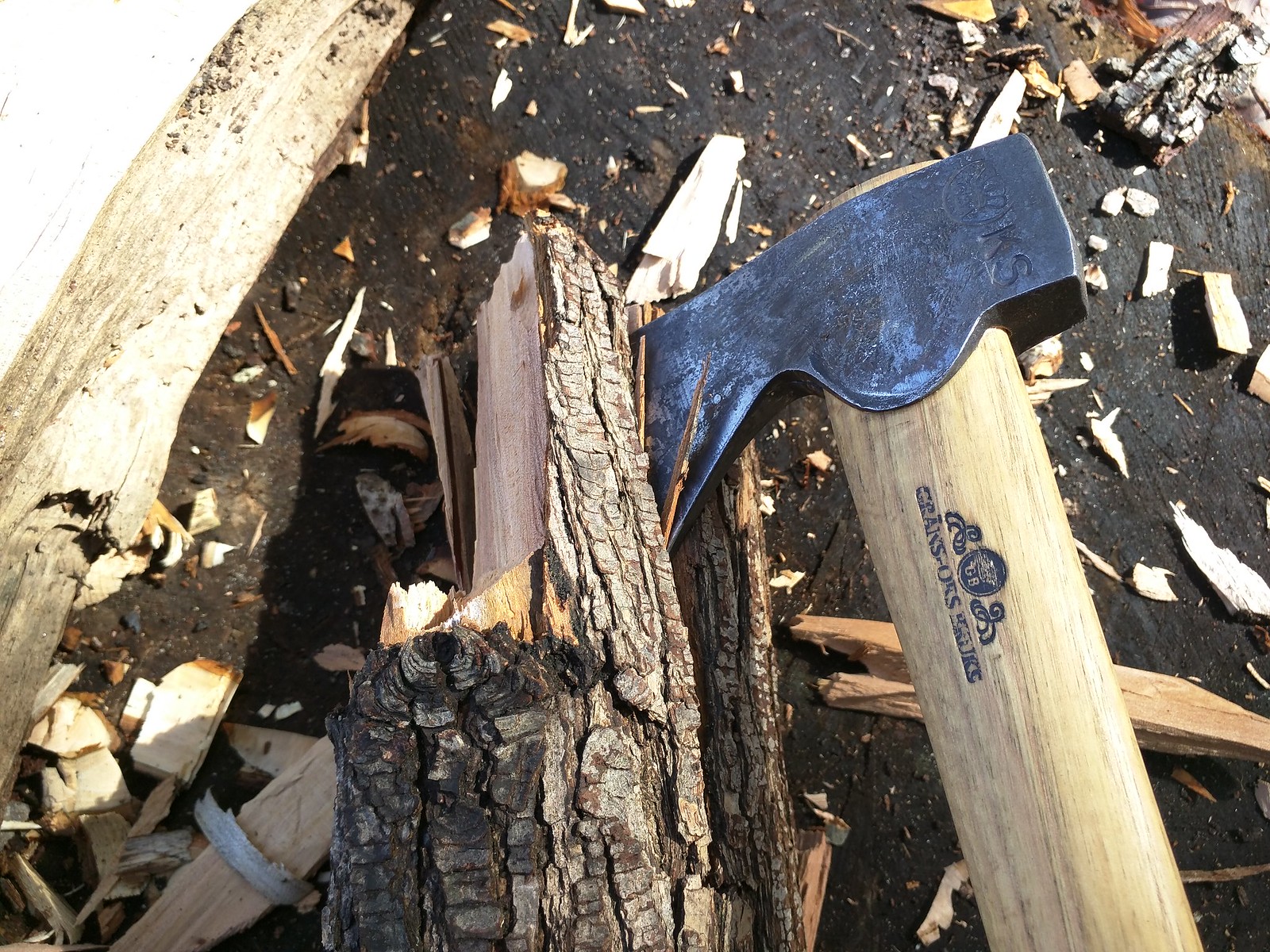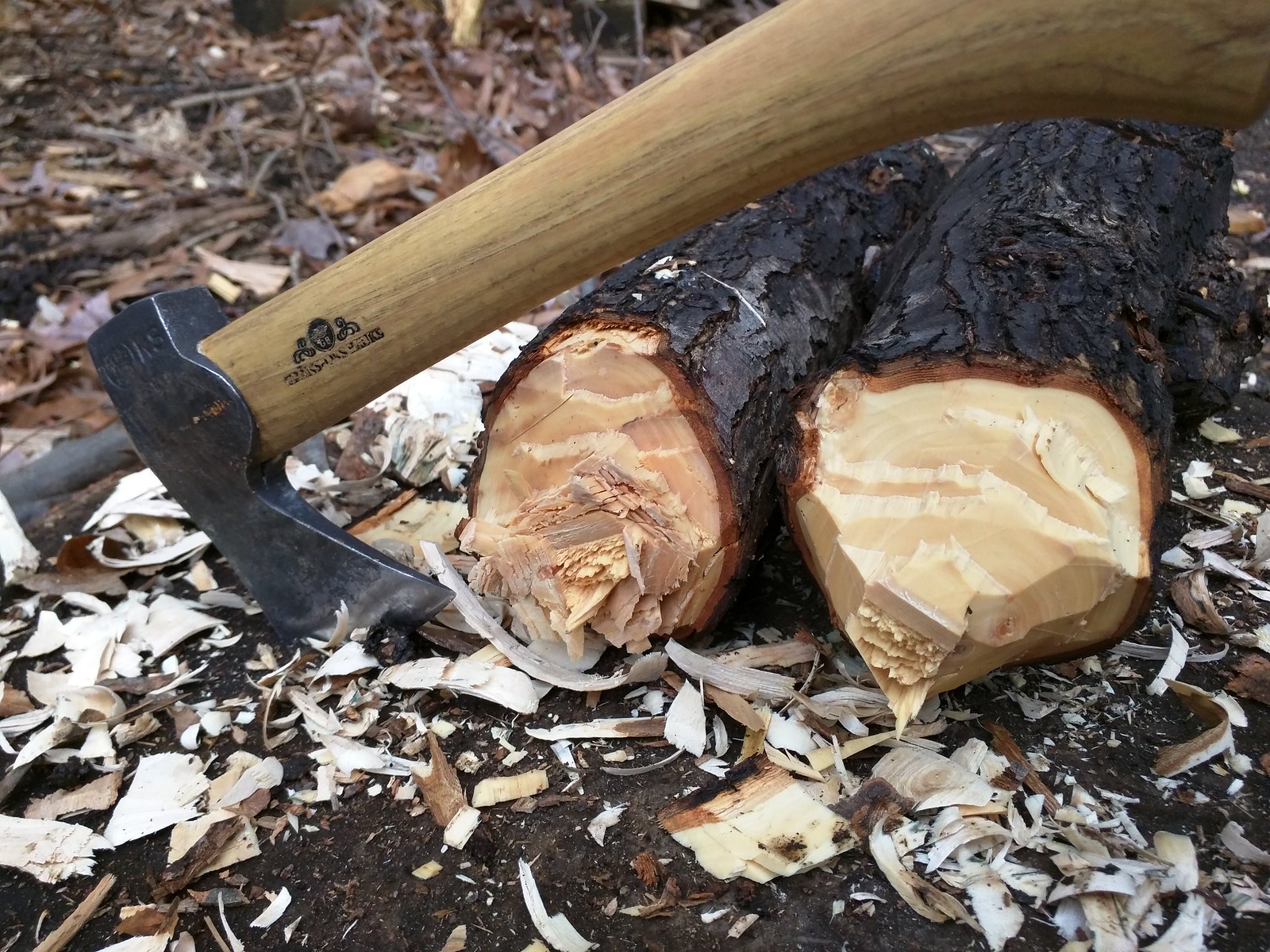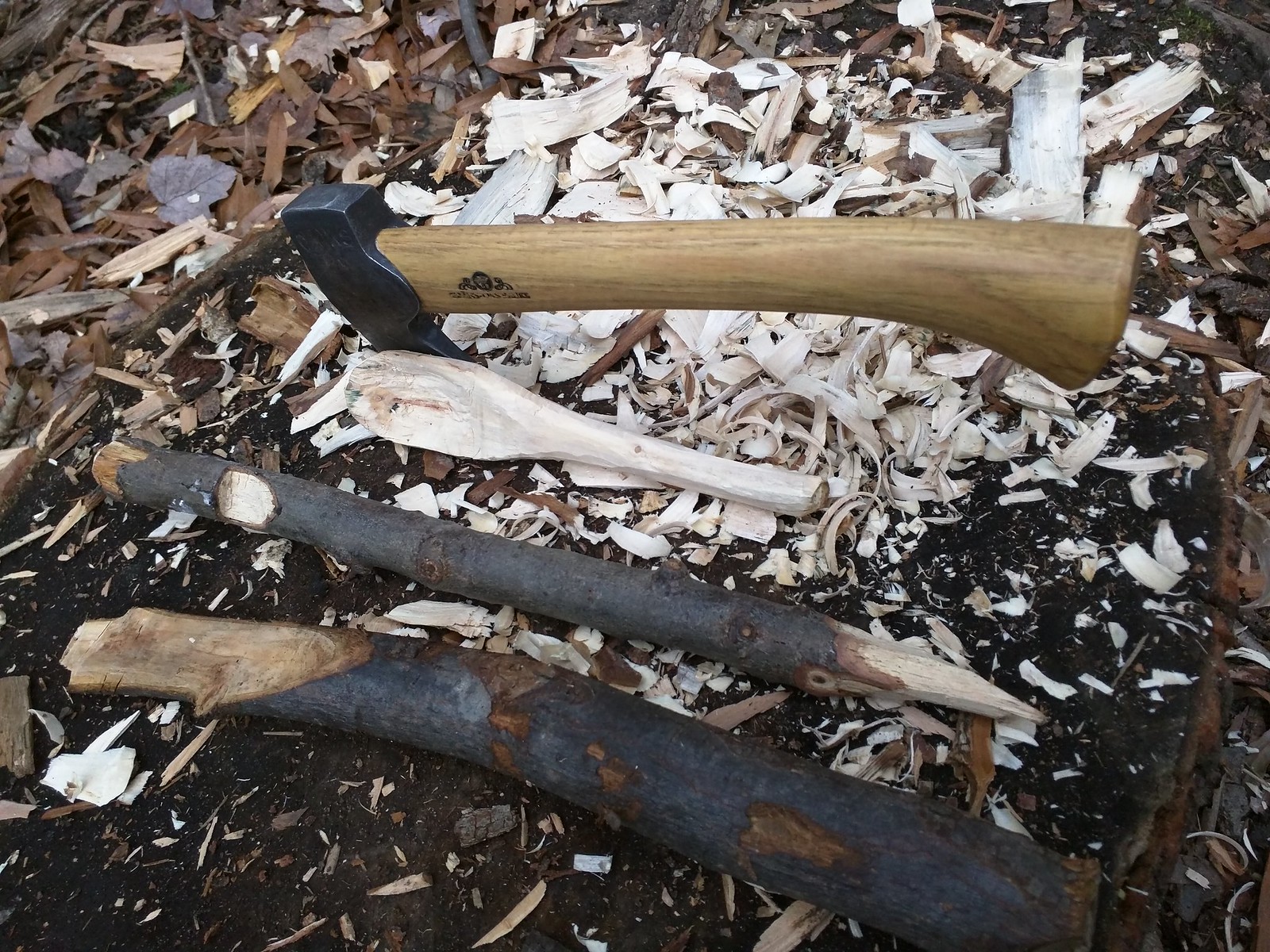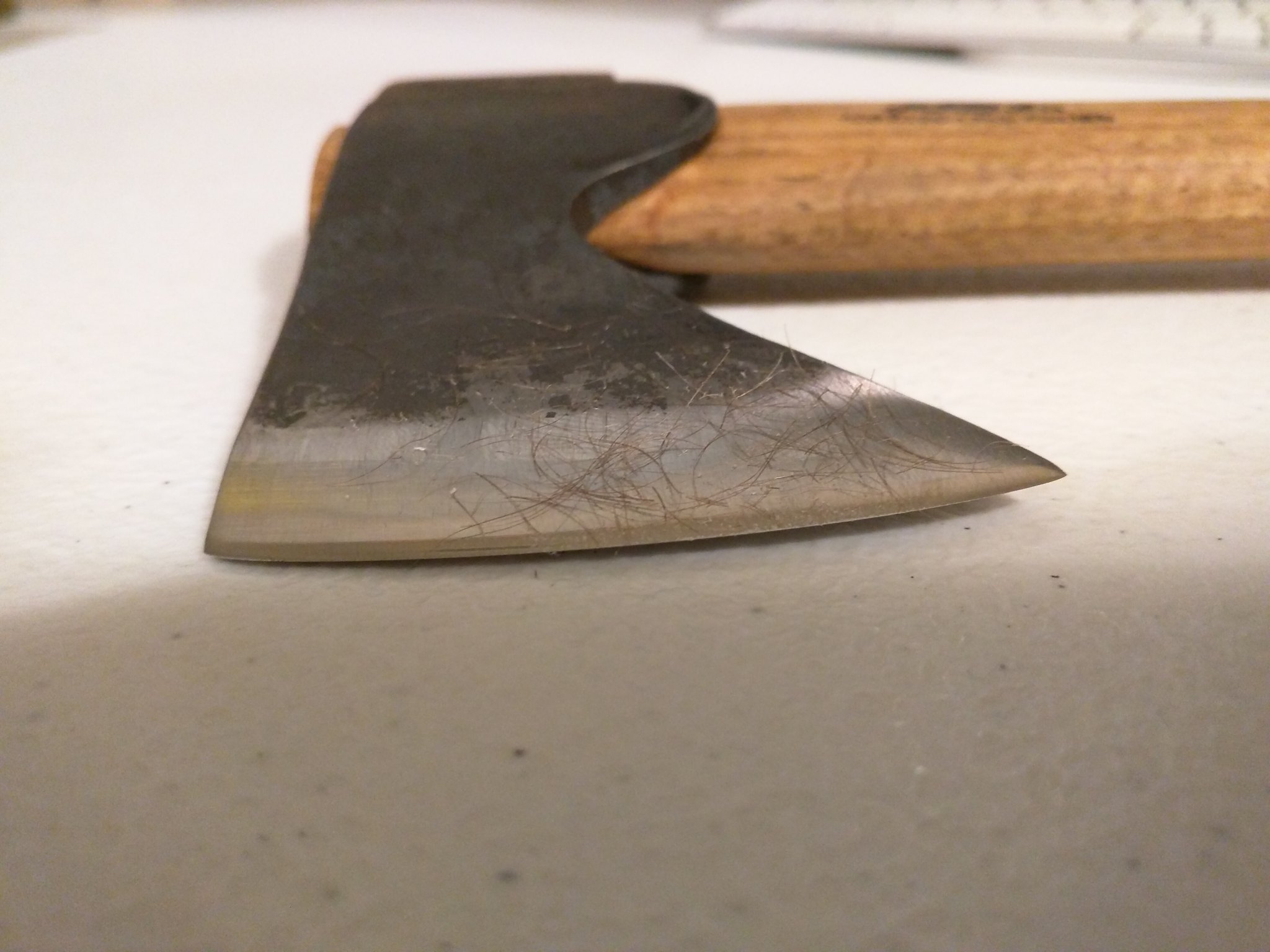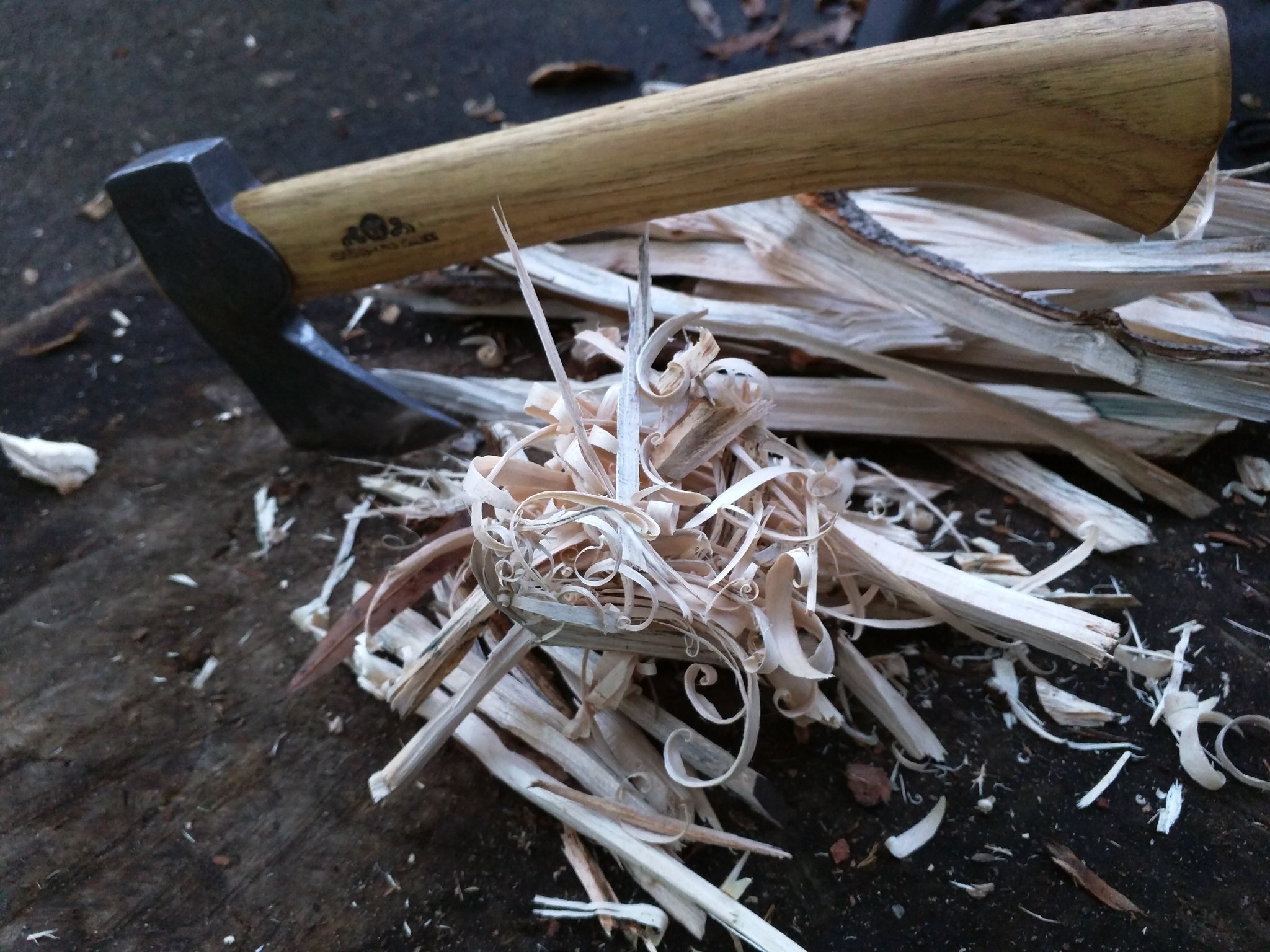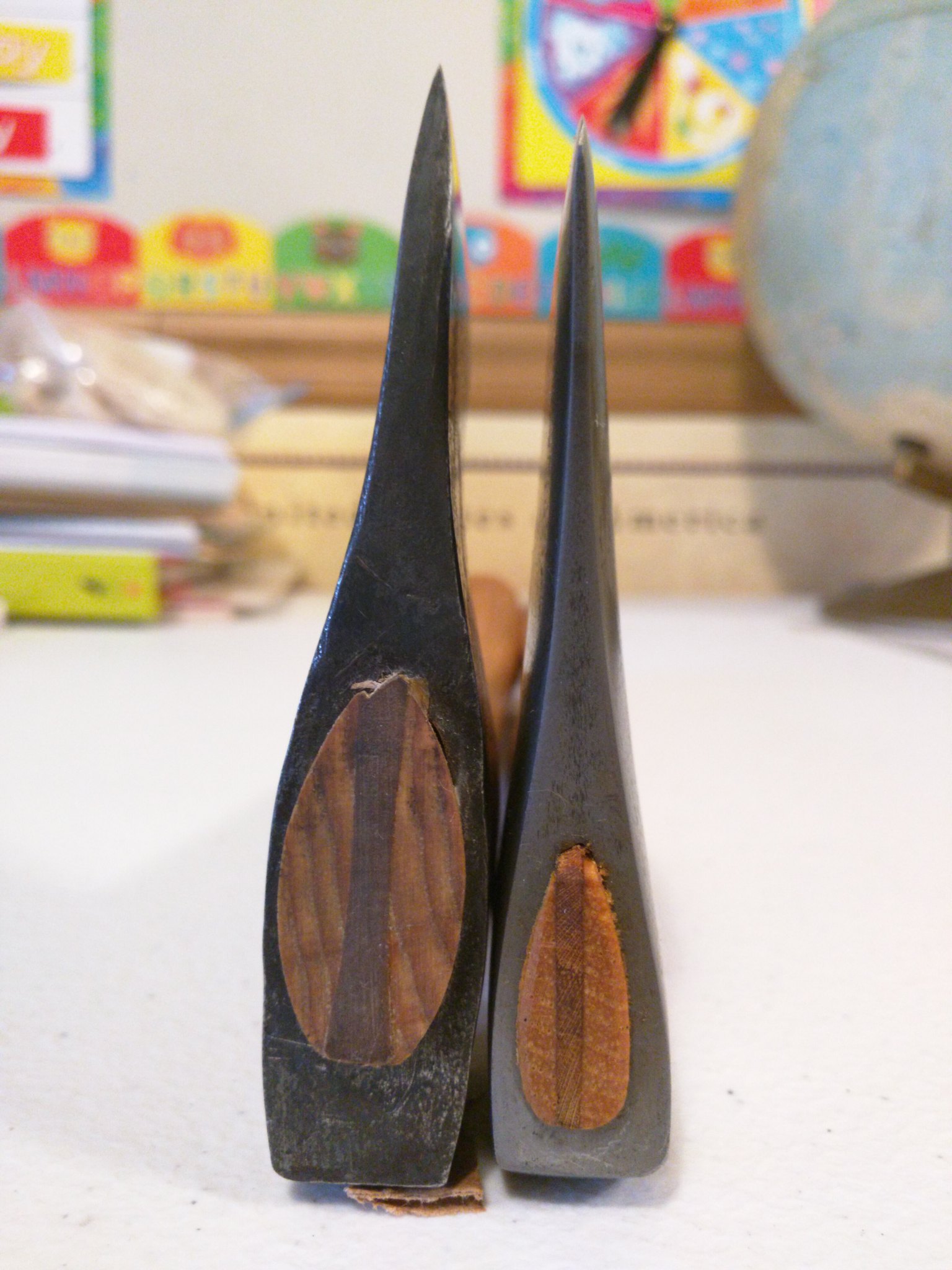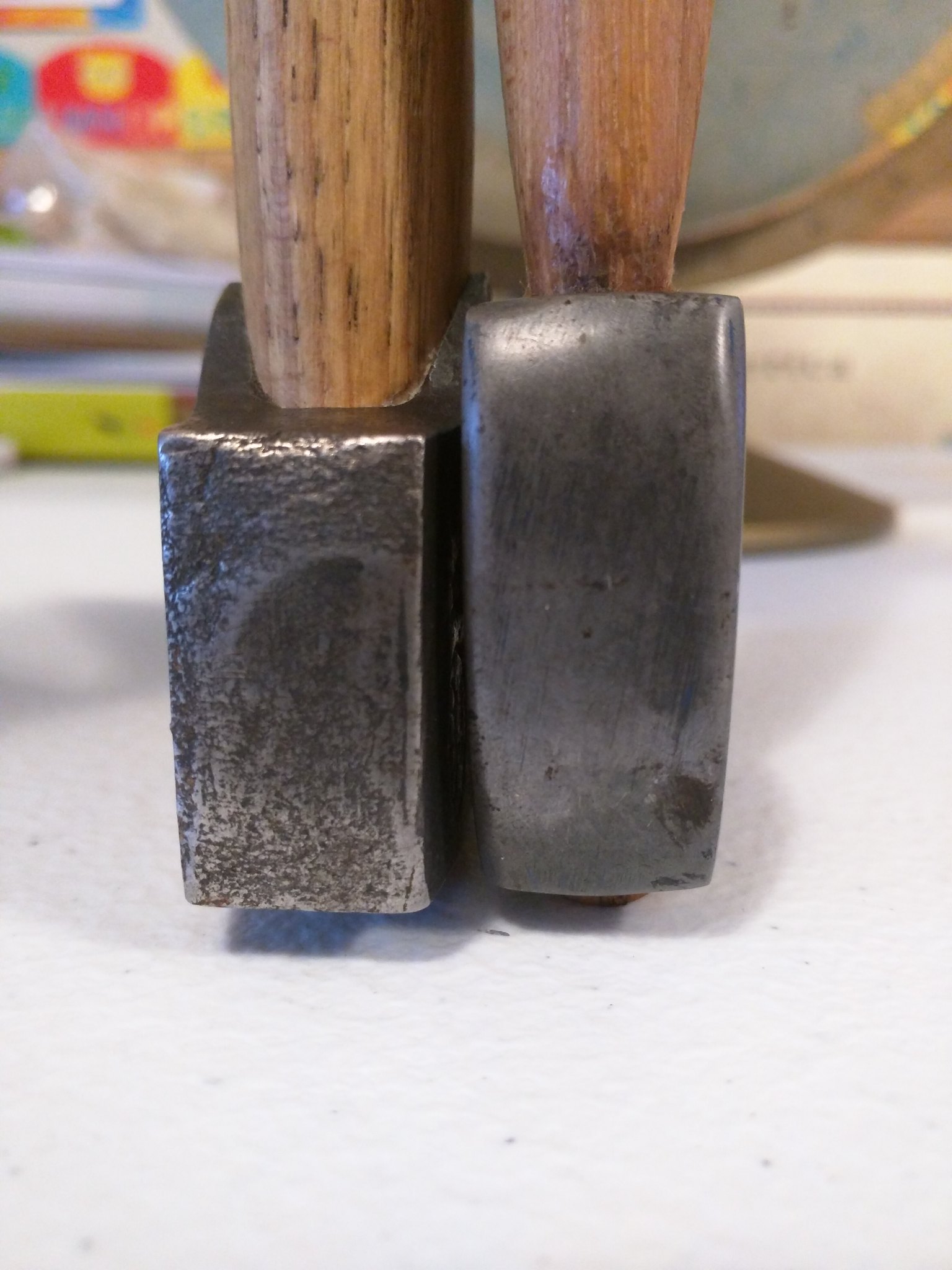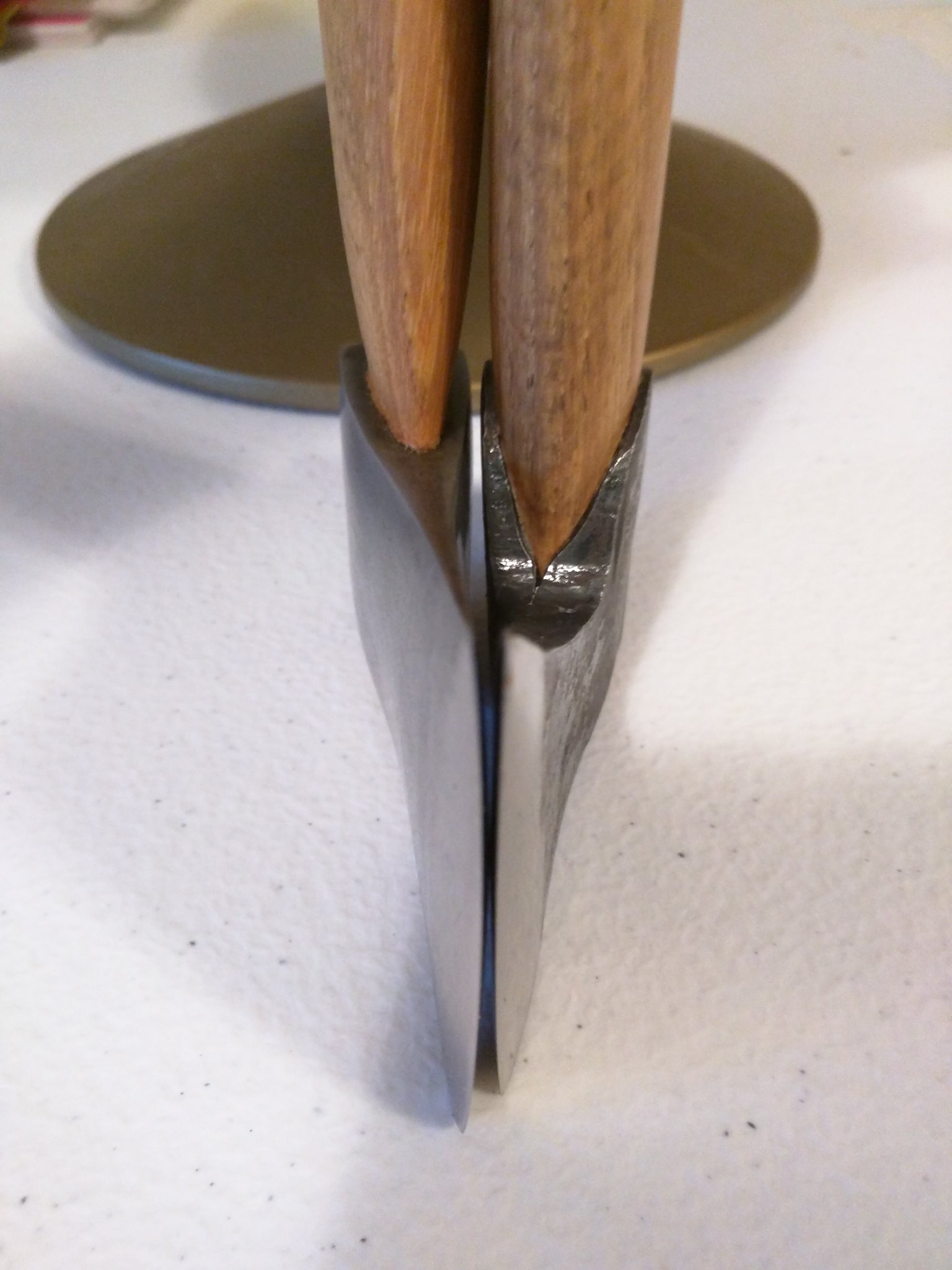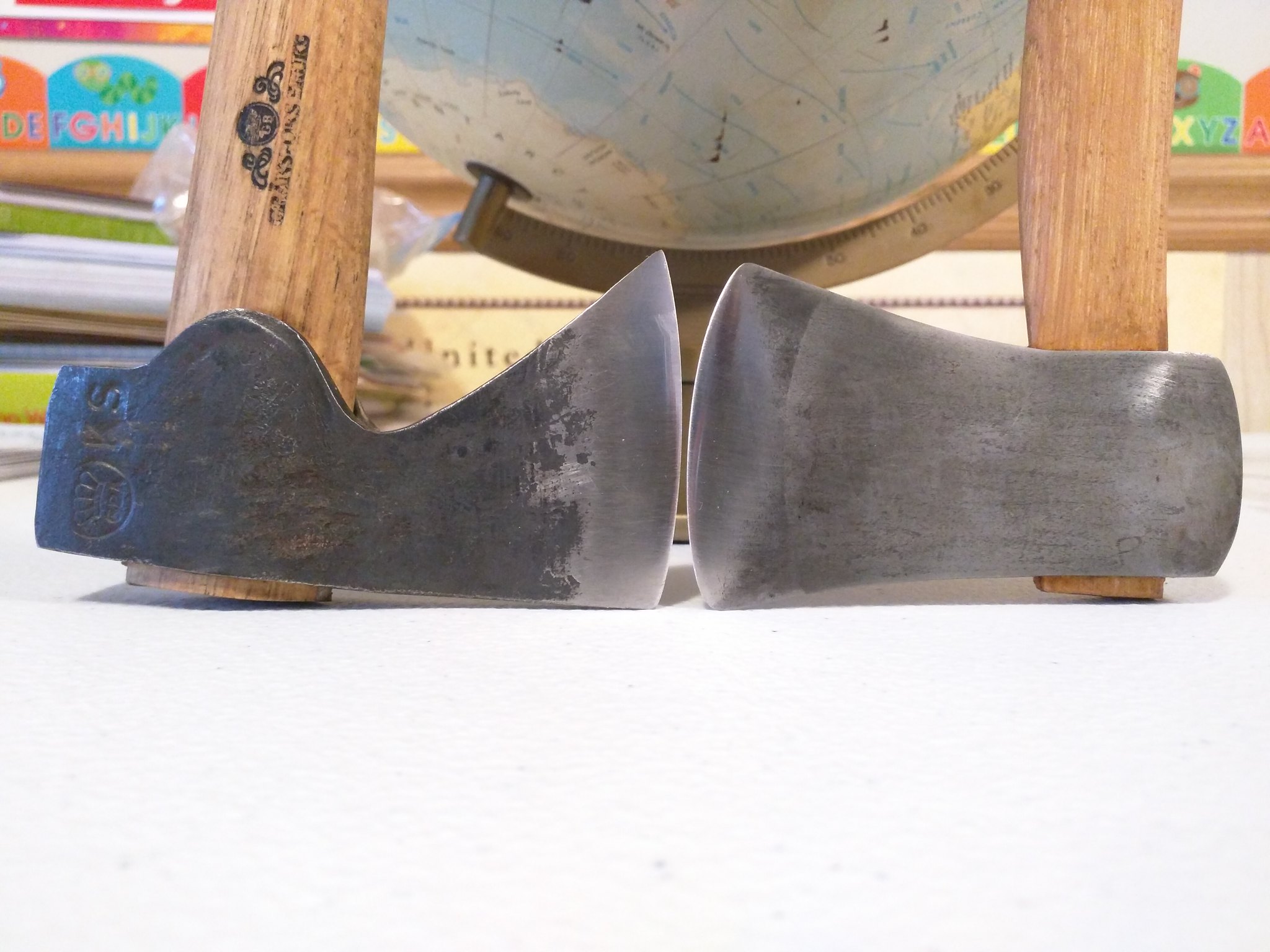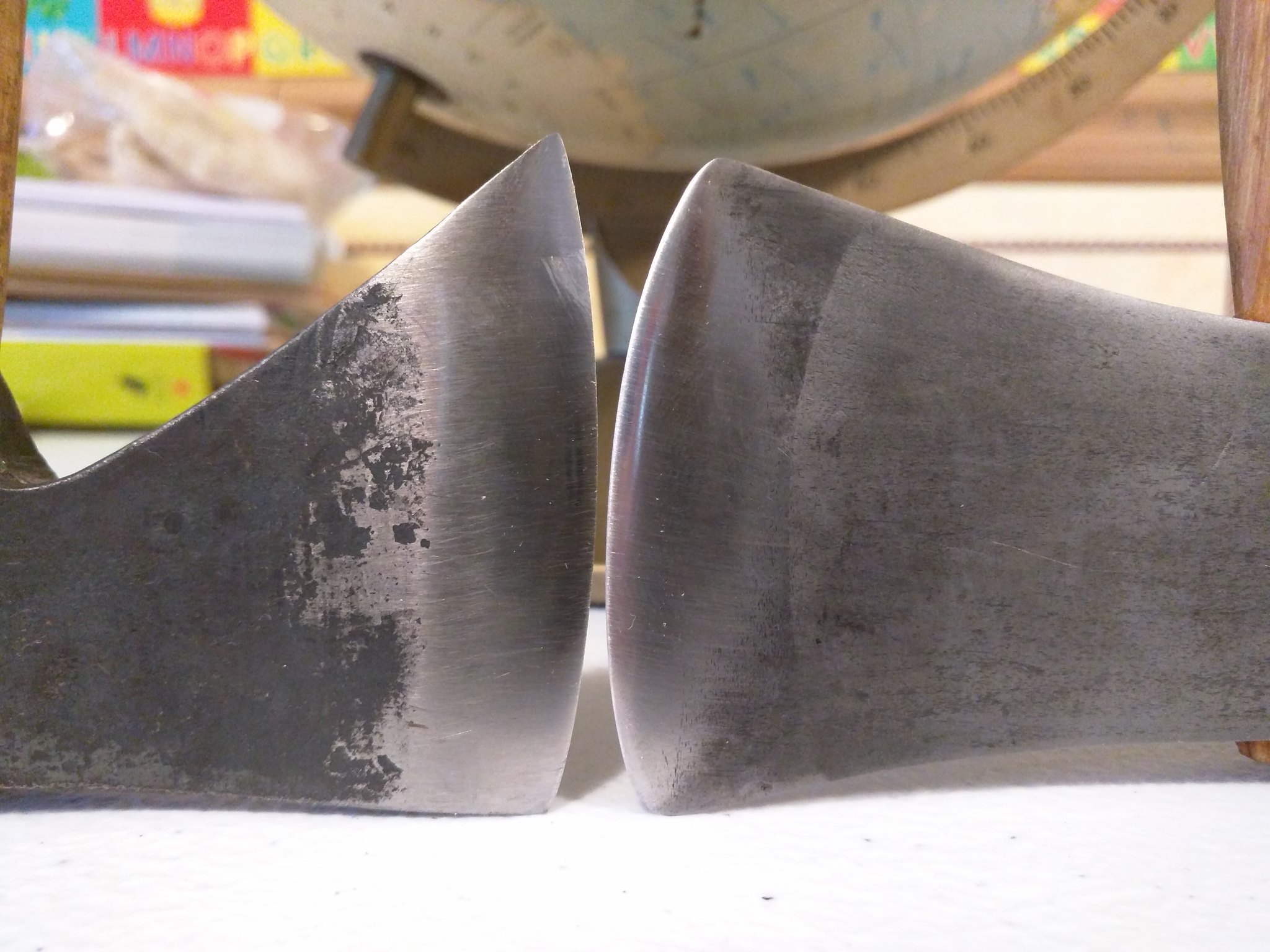Gransfors Bruks Small Hatchet Initial Thoughts
I recently was fortunate enough to participate in a pass around of a Gransfors Bruks Small Hatchet or better known as the Mini Hatchet. I did a comparison of sorts to my Vaughan Sportsman's Axe being my only 8oz hatchet in good working order at the time. Eight ounces or a half pound is the head weight specified by both Vauaghan and Gransfors Bruks, I can only attest to Vaughan's head weight specs being accurate. The handle seems short having grown used to the 12 handle I made for my Vaughan. It is however the exact length that was used on the older American half pound mini hatchets based off the two that I own. And one last detail in common seems to be a bit length of around 2.5. So the weight of the head, length of the handle and bit length seem to be derived from the classic American half pound hatchets, but that is about where the similarities seem to end.
The head of the GB is longer than the other 8 oz hatchets I own by about .5 primarily to make room for the larger eye. The poll is shorter and a bit longer but about the same thickness as my examples. The bit appeared to be thicker than two of my mini hatchets, but after making a quick gauge however I discovered that the bit was very similar to my current user. I was interested to find that the bit of the GB does have a slight high centerline, though nowhere near as pronounced as my Craftsman or the currently produced Vaughan.
Some other things of note. I was surprised at how loose the sheath was, perhaps I'm being picky but if I'd paid the asking price for the tool you'd bet I would be nitpicking it. The strap is loose enough that it can be slipped over the poll without being unsnapped. The head has a neat feel to it being machine forged by hand, this is something that can't be faked in a mass produced axe head. Even the eye has some imperfections that are clues to this, though nothing that would ever hinder it in use. The head has a beard and ears with a design that reminds me greatly of 1700s era American bag axes that I've seen with a very similar design.
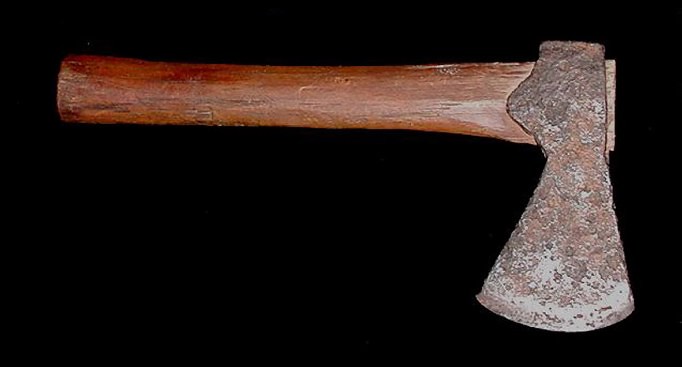
I finally understand the comments about how nicely your hand fits into the area behind the beard when you choke all the way up. I must admit it gives a very secure and comfortable grip on the axe that can't be matched with my Vaughan. An interesting aspect of this head design I've noticed though is that it actually seems to shorten the effective handle length. The toe seems to sit just slightly below the top of the eye and as the axe head sits the bit is noticeably lower than the top of the eye. This seems to put the effective handle length somewhere closer to 9-9.5 and might explain why a lot of folks seem to note that the handle feels too short.
Now for those rolling their eyes at the above wall of text here are a few pictures.
From left to right a normal sized hatchet more than likely a Kelly Woodslasher, a 14 oz no name, Marbles Camp hatchet, 11 oz William Mann/Lippincott Co, vintage red paint Vaughn Sportsman's Axe, Craftsman mini hatchet, Gransfors Bruks Small Hatchet, Vaughn Sportsman's Axe current production.
Craftsman, Vaughan, Vaughan, GB, William Mann
Just the half pound heads with some commonplace items for scale. A Victorinox Pioneer, Victorinox Jetsetter III, AAA battery, and standard alphanumeric one way pager.
I decided to take some measurements of the GB and one of my American half pound hatchets since there always seems to be confusion around just how small these hatchets are. The measurements are rounded but close enough to give a very good idea of the actual size of these things, +/- 1/16. Should be easy enough to draw out either set of measurements on some paper to get a physical idea of the size.
Gransfors Bruks Small Hatchet: 4 from bit to poll, 2.5 bit, 1.25 tall poll, ¾ at the widest point, handle 10 from top of the eye to the bottom of the knob
Craftsman half pound hatchet: 3.5 from poll to bit, 2.5 bit, 1.5 tall poll, .5 at the widest point, handle 10 from top of the eye to the bottom of the knob
First time using the GB left me with some initial impressions. The handle being shorter was immediately evident. First thing I tested it on was a seasoned pear tree branch with a 4 diameter. My Vaughan out chopped the GB, though I couldn't be clear as to if this was due to the difference in the head design or the extra length of the home brew handle on my Vaughan. I realized that I was experiencing far more fatigue with the GB both in my hand and arm. I naturally used a different technique that involved more of a full arm swing rather than the wrist flick used with the Vaughan. This caused me to grip it tighter as well since the pivot point is above the handle and this I believe is what caused the hand fatigue. The arm is obviously from having to use more muscles to achieve the same or similar force. I'm sure being on the tail end of a nasty sinus infection didn't help either.
Moving on to splitting. I found that the GB didn't want to bit into the wood and stick going with the grain to try to start a split. I switched to the Vaughan to see if it was just the wood as pear is tough stuff. Nope the Vaughan bit in and started a split with ease where the GB had failed after a vigorous attempt. I switched back to the GB to attempt to finish the split and it sunk into the ramp where it stopped due to the steep transition from cheeks to eye. Back to the Vaughan and again with ease I finished the split. This definitely seems to come down to profile and I can't see there being a difference scaling up in size to a full sized hatchet or pulp wood axe either.
Right off the bat if it was my hatchet I would want to replace the handle with one around 2-2½ longer with a knob more to my liking. The problem is this isn't something you generally want to do with a $150 hatchet, or feel like you should have to for that matter.

